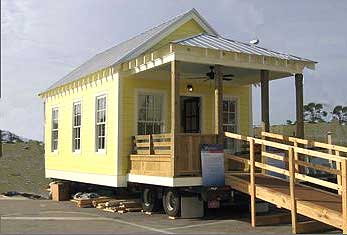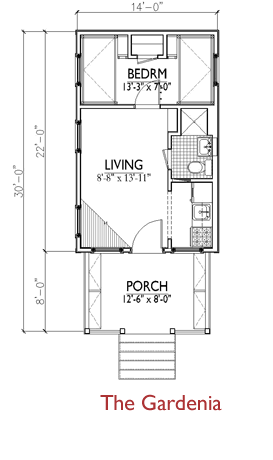Green by Design: Skye Creative
Author's note: I'm so glad to be back at Greener after a long absence. During December and January, I took the big step of leaving my academic position, and striking out into the corporate world. It's been quite a transition, but now that I'm resettled, I want to get back to bringing you stories of people working to make the world a "greener" place.
 Shea Gunther describes himself as "CEO of Skye Creative, Entrepreneur, Environmentalist, Father, Husband, Blogger" in the masthead of his "Musings of an Eco-Entrepreneur" blog. That he wears many hats should come as no surprise to anyone familiar with the entrepreneurial lifestyle. What is surprising and impressive, though, is the mark that this 27-year-old has already managed to make in the worlds of green business and graphic design. In an industry that's responsible for up to 40% of North America's solid waste, Shea has envisioned and created a company devoted to not only "delivering cohesive design strategies that drive [Skye Creative] clients' bottom line," but also to creating those strategies in an environmentally sustainable manner. Just as his blog presents an individual playing many roles, Shea has built his year-old company around a "triple-bottom-line" mission that educates clients on the benefits of green business while providing profit-driven solutions to their design needs - all while adopting a "do little harm" philosophy of business success.
Shea Gunther describes himself as "CEO of Skye Creative, Entrepreneur, Environmentalist, Father, Husband, Blogger" in the masthead of his "Musings of an Eco-Entrepreneur" blog. That he wears many hats should come as no surprise to anyone familiar with the entrepreneurial lifestyle. What is surprising and impressive, though, is the mark that this 27-year-old has already managed to make in the worlds of green business and graphic design. In an industry that's responsible for up to 40% of North America's solid waste, Shea has envisioned and created a company devoted to not only "delivering cohesive design strategies that drive [Skye Creative] clients' bottom line," but also to creating those strategies in an environmentally sustainable manner. Just as his blog presents an individual playing many roles, Shea has built his year-old company around a "triple-bottom-line" mission that educates clients on the benefits of green business while providing profit-driven solutions to their design needs - all while adopting a "do little harm" philosophy of business success.
Despite his relatively young age, Shea's no stranger to the ups and downs of start-ups: after two years of college at the University of New Hampshire and the Rochester Institute of Technology, Shea joined fellow door-to-door book salesman Nate Wieler in a move to Chapel Hill, NC, and the start-up of Zoom Culture, a broadcast media dot com. Like many of these companies, the pair found intense investor interest, and managed to raise a total of $16 million. In the process, they also hired hundreds of employees, and made three programs that aired on television. Like so many Internet enterprises, though, a lack of revenue drove the small company into "dot bomb" status.
Undeterred, and now living in Boulder, CO, Shea's next venture, Renewable Choice Energy proved more successful. Started in the basement of co-founder Quayle Hodek's house, RCE grew into "a profitable provider of wind power to homes and businesses." In January, Shea announced on "Musings of an Eco-Entrepreneur" that RCE had landed a contract with Whole Foods Markets to purchase wind power green tags that would offset 100% of the company's projected energy use for 2006. The decision by Whole Foods made the company the largest purchaser of wind power offsets in the United States, and gave Renewable Choice Energy national exposure.

By the time of that announcement, though, Shea had married girlfriend Heather, and the couple had their first child. In order to spend more time with his new family, Shea left RCE to freelance as a graphic designer. As "an entrepreneur to the core," though, he began to look for another venture. The birth of Skye Creative, as Shea describes on his blog, carried overtones of Jerry Maguire:
Despite a string of successes, Shea's clearly still has energy to spare: he launched "Musings of an Eco-Entrepreneur" with a 24-hour "blogathon," and will host another one alongside other green blogs on February 24-25 to raise funds for The Nature Conservancy. Despite the obvious demands of business and family, he still finds time to coach a high school competitive frisbee team. The company belongs to the Boulder Chamber of Commerce, and Shea's also active at Greenbusiness.net. Energy and passion clearly drive this young entrepreneur, and we'll be watching to see which hat he tries on next.
Jeff McIntire-Strasburg -- Guest Columnist
Greener Magazine
 Shea Gunther describes himself as "CEO of Skye Creative, Entrepreneur, Environmentalist, Father, Husband, Blogger" in the masthead of his "Musings of an Eco-Entrepreneur" blog. That he wears many hats should come as no surprise to anyone familiar with the entrepreneurial lifestyle. What is surprising and impressive, though, is the mark that this 27-year-old has already managed to make in the worlds of green business and graphic design. In an industry that's responsible for up to 40% of North America's solid waste, Shea has envisioned and created a company devoted to not only "delivering cohesive design strategies that drive [Skye Creative] clients' bottom line," but also to creating those strategies in an environmentally sustainable manner. Just as his blog presents an individual playing many roles, Shea has built his year-old company around a "triple-bottom-line" mission that educates clients on the benefits of green business while providing profit-driven solutions to their design needs - all while adopting a "do little harm" philosophy of business success.
Shea Gunther describes himself as "CEO of Skye Creative, Entrepreneur, Environmentalist, Father, Husband, Blogger" in the masthead of his "Musings of an Eco-Entrepreneur" blog. That he wears many hats should come as no surprise to anyone familiar with the entrepreneurial lifestyle. What is surprising and impressive, though, is the mark that this 27-year-old has already managed to make in the worlds of green business and graphic design. In an industry that's responsible for up to 40% of North America's solid waste, Shea has envisioned and created a company devoted to not only "delivering cohesive design strategies that drive [Skye Creative] clients' bottom line," but also to creating those strategies in an environmentally sustainable manner. Just as his blog presents an individual playing many roles, Shea has built his year-old company around a "triple-bottom-line" mission that educates clients on the benefits of green business while providing profit-driven solutions to their design needs - all while adopting a "do little harm" philosophy of business success.Despite his relatively young age, Shea's no stranger to the ups and downs of start-ups: after two years of college at the University of New Hampshire and the Rochester Institute of Technology, Shea joined fellow door-to-door book salesman Nate Wieler in a move to Chapel Hill, NC, and the start-up of Zoom Culture, a broadcast media dot com. Like many of these companies, the pair found intense investor interest, and managed to raise a total of $16 million. In the process, they also hired hundreds of employees, and made three programs that aired on television. Like so many Internet enterprises, though, a lack of revenue drove the small company into "dot bomb" status.
Undeterred, and now living in Boulder, CO, Shea's next venture, Renewable Choice Energy proved more successful. Started in the basement of co-founder Quayle Hodek's house, RCE grew into "a profitable provider of wind power to homes and businesses." In January, Shea announced on "Musings of an Eco-Entrepreneur" that RCE had landed a contract with Whole Foods Markets to purchase wind power green tags that would offset 100% of the company's projected energy use for 2006. The decision by Whole Foods made the company the largest purchaser of wind power offsets in the United States, and gave Renewable Choice Energy national exposure.

Shea's photograph published with the USA Today article on Whole Foods.
By the time of that announcement, though, Shea had married girlfriend Heather, and the couple had their first child. In order to spend more time with his new family, Shea left RCE to freelance as a graphic designer. As "an entrepreneur to the core," though, he began to look for another venture. The birth of Skye Creative, as Shea describes on his blog, carried overtones of Jerry Maguire:
One night I was having a hard time getting to sleep. I had finally settled my brain down and was in that hazy middle zone between being awake and asleep when the Big Idea came to me. The Big Idea that would be a nexus of three of my passions, business, great design, and the environment. I got up and turned on my laptop. In an hour I had worked out the rough idea for Skye Creative.After several months of marketing research and refinement of the business plan, Shea launched Skye Creative. After a year in business, he's most proud of "still being around," but also of the impact the company's already made: "I'm very proud that even if we shut down tomorrow, we've made some impact by bringing up the issue of the environmental impact of what we do in the graphic design industry." The young company's also made an impact in the Boulder area with clients ranging from florists to publishers to a deep-sea diving company.
Despite a string of successes, Shea's clearly still has energy to spare: he launched "Musings of an Eco-Entrepreneur" with a 24-hour "blogathon," and will host another one alongside other green blogs on February 24-25 to raise funds for The Nature Conservancy. Despite the obvious demands of business and family, he still finds time to coach a high school competitive frisbee team. The company belongs to the Boulder Chamber of Commerce, and Shea's also active at Greenbusiness.net. Energy and passion clearly drive this young entrepreneur, and we'll be watching to see which hat he tries on next.
Jeff McIntire-Strasburg -- Guest Columnist
Greener Magazine



8:51 PM












